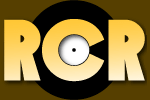


Site Map
About RCR
back to
world of the cubby
cubby home page
If you are like us here at the RCR headquarters, then you want to know the value of your records, or perhaps the real worth of the records you're buying. Who knows, you might have a treasure in your collection! Or maybe you just spent $20 too much on that copy of "Pet Sounds" you bought the other day. As far as what you must take into consideration when figuring out the value of a record, we've broken it down for you into three easy-to-remember categories: condition, edition, and derivation. Also, we've recommended some Web sites where you can go to find out more information.
Condition
Let's be honest: no one wants to listen to a broken record. The better condition your record's in, the more it might possibly be worth. This includes not only how many scuffs or scratches are on the vinyl, but how well preserved the cover is and whether or not you have the original inner sleeve.
Edition
First editions are worth more than second, third or fourth pressings, except under certain circumstances, like the second pressing had an extra song or a different picture on the cover. Also, many record companies will produce different versions for different countries. These are also often valued differently. So when you see that pristine copy of "Sgt. Pepper's" and wonder why it's not worth as much as the more beat up copy, it's probably because it is the Apple version and not the original Capitol Records version that has all the great psychedelic inserts.
Derivation
As much as you like the Plimsouls, their records are simply not going to be worth as much as those by critically acclaimed artists like the Beatles, or those by bands with intense and loyal cult followings like Joy Division. Also, some records become highly valued just through association. For instance, records on the Decca or Sun labels, regardless of the artist, are highly prized. The same goes for records of performers produced by the likes of renowned artists such as Phil Spector or Lee Scratch Perry.
Resources
As you can tell there is a lot of things to keep in mind when considering the value of a record. Ultimately, though, the best way to truly find the value is to check out a price guide and become familiar with how records are priced and what people are paying for them. Allow us to recommend a few places where you can go to do this.


